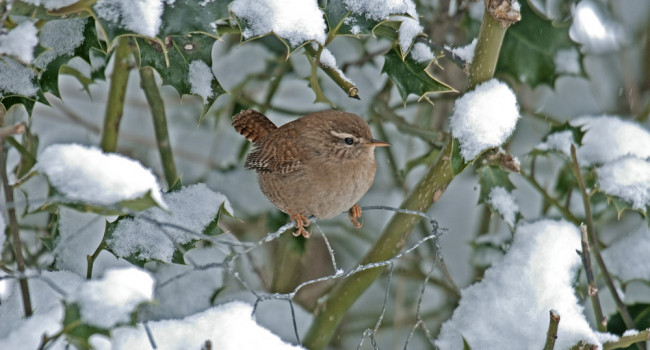One-third of English breeding bird species show evidence of population responses to climatic variables over 50 years

Author(s): Pearce-Higgins, J.W. & Crick, H.Q.P.
Published: September 2019 Pages: 14pp
Journal: Bird Study
Digital Identifier No. (DOI): 10.1080/00063657.2019.1630360
Climate change is widely regarded as a major threat to the functioning of natural systems and to the maintenance of species’ populations. Birds are one of the taxa where climate change impacts have been most studied, the research demonstrating a range of documented responses, including advancement in the timing of migration and breeding, poleward shifts in distribution, and changes in community structure. While such work highlights some of the effects of climate change, the attribution of specific changes in species’ populations to a changing climate remains challenging. The research reported in this paper examines the potential impacts of climate change on individual species for as wide a component of England’s breeding avifauna as is currently possible.
The study used data from the BTO’s Common Bird Census and the BTO/JNCC/RSPB Breeding/Bird Survey to generate annual indices of population change for 68 species, from 1966 to 2015. These data were then examined in relation to changes over time – and differences between regions – in a series of climatic variables derived from the National Oceanic and Atmospheric Administration / Earth System Research Laboratory, Physical Sciences Division series. This enabled Pearce-Higgins and Crick to consider climatic variables across the different geographical regions of relevance to individual species. For example, climatic conditions in England, Iberia and the Sahel region of Africa needed to be considered when examining population changes in those migrant species breeding in England but wintering in Africa’s arid-zone and migrating via Spain and Portugal.
The results of the statistical analyses suggest that climate change has had a measurable effect on the population fluctuations of about a third of the breeding species considered, resulting in notable positive impacts on the abundance of 13 species and notable negative impacts on three species. The majority of the effects found related to climatic conditions within England, which were particularly apparent for resident species during summer and winter. These findings support previous BTO work, highlighting the role of winter temperature as a key driver of resident bird populations, including Goldcrest, Long-tailed Tit and Dunnock.
With the exception of Common Whitethroat, Reed Warbler and Spotted Flycatcher, the study failed to find strong evidence for significant effects of climatic conditions away from the UK impacting on migratory species, something that may reflect the difficulty of assessing climate changes impacts on migratory birds, brought about in part by our incomplete knowledge of the migration routes and wintering areas for many of these species. This emphasizes that research seeking evidence for climatic impacts on species must also include a mechanistic understanding of the potential links between climatic variables and the population of interest. Gaining such understanding is an important component of current BTO work on migrant bird populations, with the knowledge gained on migration routes, wintering areas and differences between regional breeding populations key to future work.
Abstract
Capsule: Population growth rates of one-third of 68 breeding bird species in England were significantly affected by climatic variables, leading to notable (>10%) population increases in 13 species, and declines in three.
Aims: To model the impact of climate change on the abundance of breeding bird species in England.
Methods: Annual variation in population growth rates from 1966 to 2015 for English birds were modelled using a combination of climatic variables from England and along their migration routes, year and count in the previous year, and used to predict long-term trends over that time period.
Results: Population growth rates of 24/68 species (35%) were significantly correlated with climatic variables, although one relationship was driven by a single outlier and probably not robust. The majority of the effects were related to English conditions, particularly for resident species during summer and winter. Based on trends in climatic variables, the estimated magnitude of the effect of climate change upon the long-term bird population trends was sufficient to have resulted in notable (>10%) positive impacts on the abundance of 13 of the species modelled, and negative impacts on three.
Conclusion: Climate change has had a detectable impact on a sizeable proportion of the English avifauna over the last 50 years. In particular, populations of a range of resident bird species are probably significantly greater than they would otherwise have been in the absence of climate change, although some species may be less common. However, robustly attributing these trends to climate change, using a correlative approach such as this, is challenging, particularly for migrant species.
Notes
This work was funded by BTO and Natural England. The annual population trend estimates for England used in this study originate from the BTO Common Bird Census and more recently, from the BTO/JNCC/RSPB Breeding Bird Survey. The latter is supported by a Partnership jointly funded by the BTO, RSPB and JNCC, with fieldwork conducted by volunteers, to whom we are very grateful.







Share this page